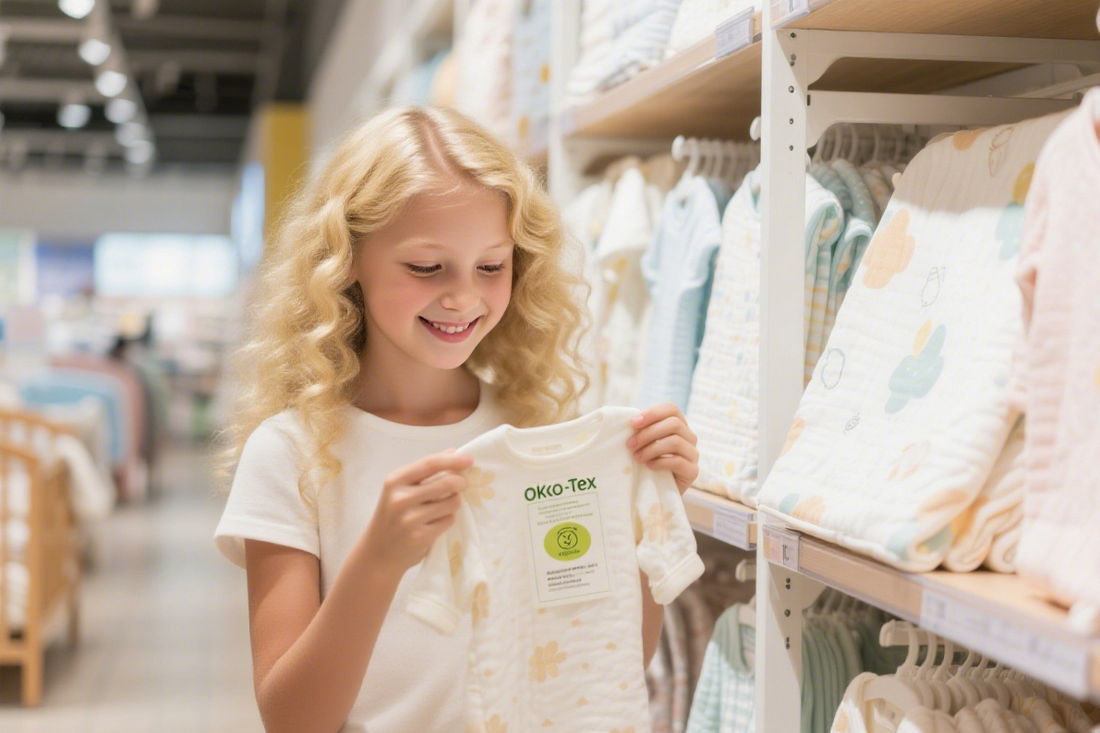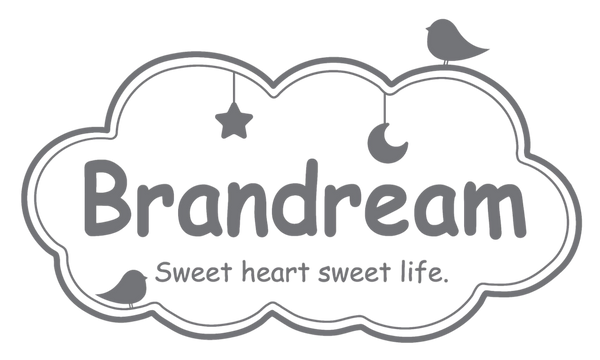Baby Bedding Safety: What You Need to Know

When it comes to preparing a nursery for your newborn, one of the most important considerations is ensuring the safety of your baby’s bedding. Parents want their babies to sleep peacefully, but they also want to ensure their little ones are safe while doing so. Bedding safety can have a significant impact on your baby’s health and comfort, and understanding the best practices for crib bedding can help avoid potential risks.
In this guide, we’ll cover everything you need to know about baby bedding safety, from choosing the right materials to setting up a safe sleep environment.
1. Choosing the Right Bedding Materials
One of the first steps in ensuring safe bedding for your baby is choosing the right materials. Babies have sensitive skin, and choosing hypoallergenic, breathable, and soft fabrics is crucial for comfort and health.
Hypoallergenic Bedding for Babies
For babies with sensitive skin or allergies, hypoallergenic bedding is a must. Look for materials that are soft and gentle on the skin while minimizing exposure to common allergens such as dust mites, mold, and pet dander. Organic cotton is an excellent option as it is not only gentle on the skin but also free from pesticides and chemicals that can cause irritation. At Brandream, we specialize in high-quality hypoallergenic baby bedding made from organic materials.
Breathable Fabrics
Breathability is another important factor in bedding selection. Materials like cotton and bamboo are breathable and allow for better airflow, which helps regulate your baby’s body temperature. Breathable fabrics can reduce the risk of overheating, a common concern for new parents. Look for crib sheets and blankets made from these fabrics for a cooler and safer sleeping environment.
Softness and Comfort
While comfort is important for your baby’s sleep, softness should never be compromised for safety. Choose materials that are soft to the touch and comfortable for your baby. But be cautious of overly plush or thick bedding, as it may increase the risk of suffocation or overheating.
2. Avoiding Loose Bedding and Pillows
One of the most important safety guidelines when it comes to baby bedding is to avoid loose bedding in the crib. Loose items such as blankets, pillows, and stuffed animals can pose a suffocation hazard. According to the American Academy of Pediatrics (AAP), your baby’s sleep space should be clear of any soft bedding, pillows, bumper pads, and toys until they are older.
Fitted Sheets Are a Must
To ensure a secure and safe fit, always use fitted sheets designed specifically for your baby’s crib. Fitted sheets will stay in place throughout the night, minimizing the risk of loose bedding that could cover your baby’s face. Ensure that the fitted sheet is snug around the mattress and fits properly without any loose edges.
Avoid Using Bumper Pads
Many parents love crib bumper pads for their aesthetic appeal, but they can pose a serious risk. Bumper pads can trap your baby’s face or body, increasing the risk of suffocation. In fact, the AAP strongly advises against using bumper pads in the crib, even if they are marketed as breathable. Instead, opt for a simple, safe crib setup with a firm mattress and fitted sheets.
3. The Importance of a Firm Mattress
A firm mattress is another essential component of a safe sleeping environment. A soft mattress can increase the risk of suffocation, while a firm mattress supports your baby’s developing bones and muscles. Be sure to choose a mattress that fits snugly within the crib without any gaps along the sides.
Mattress Protectors
If you want to protect your baby’s mattress from accidents like spills, leaks, or spit-up, choose a waterproof mattress protector made of breathable material. This will keep the mattress clean while still allowing airflow. However, ensure that the mattress protector fits properly and doesn’t add excess softness or padding to the mattress.
4. Crib Setup and SIDS Prevention
Safe crib setup is critical in preventing Sudden Infant Death Syndrome (SIDS), a heartbreaking condition that claims the lives of babies under one year old. The AAP recommends the following guidelines for creating a safe crib:
- Place your baby on their back to sleep. Always put your baby to sleep on their back to reduce the risk of SIDS.
- Use a firm mattress. The mattress should be firm, flat, and free from any soft materials.
- Keep the crib clear of soft bedding. Avoid blankets, pillows, stuffed animals, and bumper pads, as they can pose a suffocation risk.
Swaddle Safely
If you’re swaddling your baby, make sure it’s done safely. Swaddling can help soothe a newborn and encourage sleep, but it’s important to leave the baby’s face and head uncovered. Swaddle blankets should be snug around the chest but allow for free movement of the baby’s hips and legs to avoid hip dysplasia.
5. The Right Sleepwear for Babies
Instead of using blankets, consider using sleep sacks or wearable blankets, which are safer options for babies who need extra warmth. These wearable blankets zip up securely and provide a comfortable, breathable alternative to traditional blankets.
Seasonal Considerations
Always adjust your baby’s sleepwear to suit the season. In warm weather, lightweight, breathable fabrics like cotton should be used. In colder months, opt for warmer fabrics but avoid overdressing your baby, as overheating is a risk factor for SIDS.
6. Regular Cleaning and Maintenance
Keeping your baby’s bedding clean is essential for maintaining a healthy and safe sleep environment. Babies are prone to spills, spit-up, and diaper leaks, so it’s important to wash their bedding regularly. Use a gentle, hypoallergenic detergent and wash bedding at high temperatures to remove germs, bacteria, and allergens.
Laundry Routine for Baby Bedding
Set up a laundry schedule to ensure that your baby’s sheets, blankets, and mattress protectors are washed frequently. Changing the crib sheet once a week (or more often if necessary) is a good practice to keep things fresh and hygienic. If you use a mattress protector, it should also be washed regularly to ensure cleanliness and protection.
7. How to Identify High-Quality Baby Bedding
When purchasing baby bedding, look for products that meet safety standards and have been tested for harmful chemicals. For example, Oeko-Tex certification ensures that the bedding is free of harmful substances that could irritate your baby’s skin.
FAQs on Baby Bedding Safety
What are the safest fabrics for baby bedding?
The safest fabrics for baby bedding are natural, breathable materials such as organic cotton and bamboo. These fabrics are gentle on the baby’s skin and help regulate temperature.
Can I use a blanket in the crib?
It is not recommended to use blankets in the crib for babies under one year old due to the risk of suffocation. Instead, use a sleep sack or wearable blanket for warmth.
How often should I change my baby’s bedding?
You should change your baby’s bedding whenever it becomes soiled, which may happen due to spit-up, diaper leaks, or sweat. In general, changing the bedding at least once a week is recommended.
Conclusion:
Ensuring the safety of your baby’s bedding is an important part of creating a safe sleep environment. By following these expert recommendations and safety guidelines, you can rest easy knowing that your little one is both comfortable and secure while they sleep. Always prioritize high-quality, hypoallergenic materials, a firm mattress, and a clear crib with no soft bedding to reduce any potential risks.
For more tips on creating a safe and comfortable sleep environment for your baby, visit Brandream and explore our collection of premium baby bedding.
Shop Our Safe and Cozy Baby Bedding Collection:
Explore our range of safe, hypoallergenic, and breathable baby bedding options designed with your little one’s comfort in mind. Shop Now at Brandream

